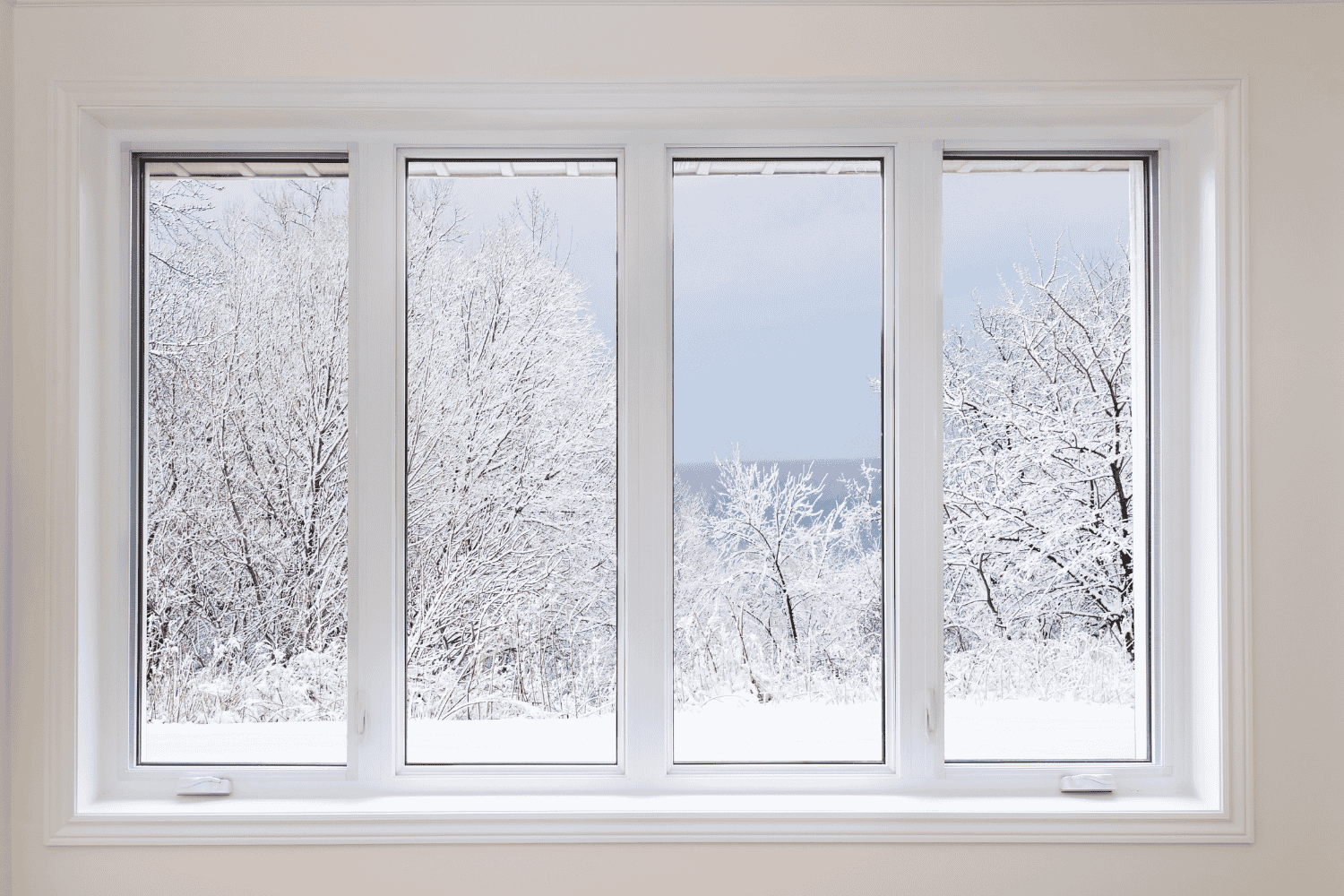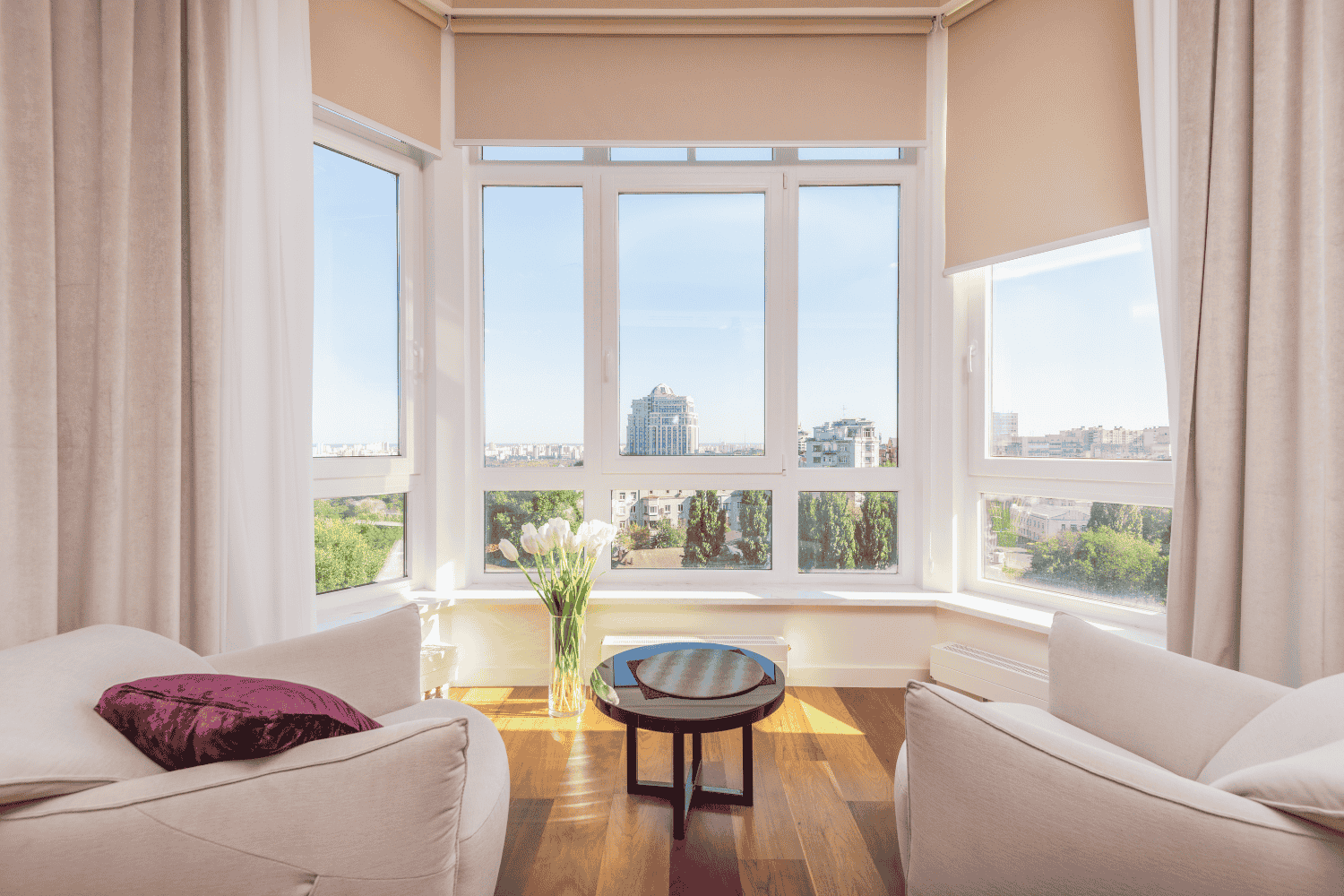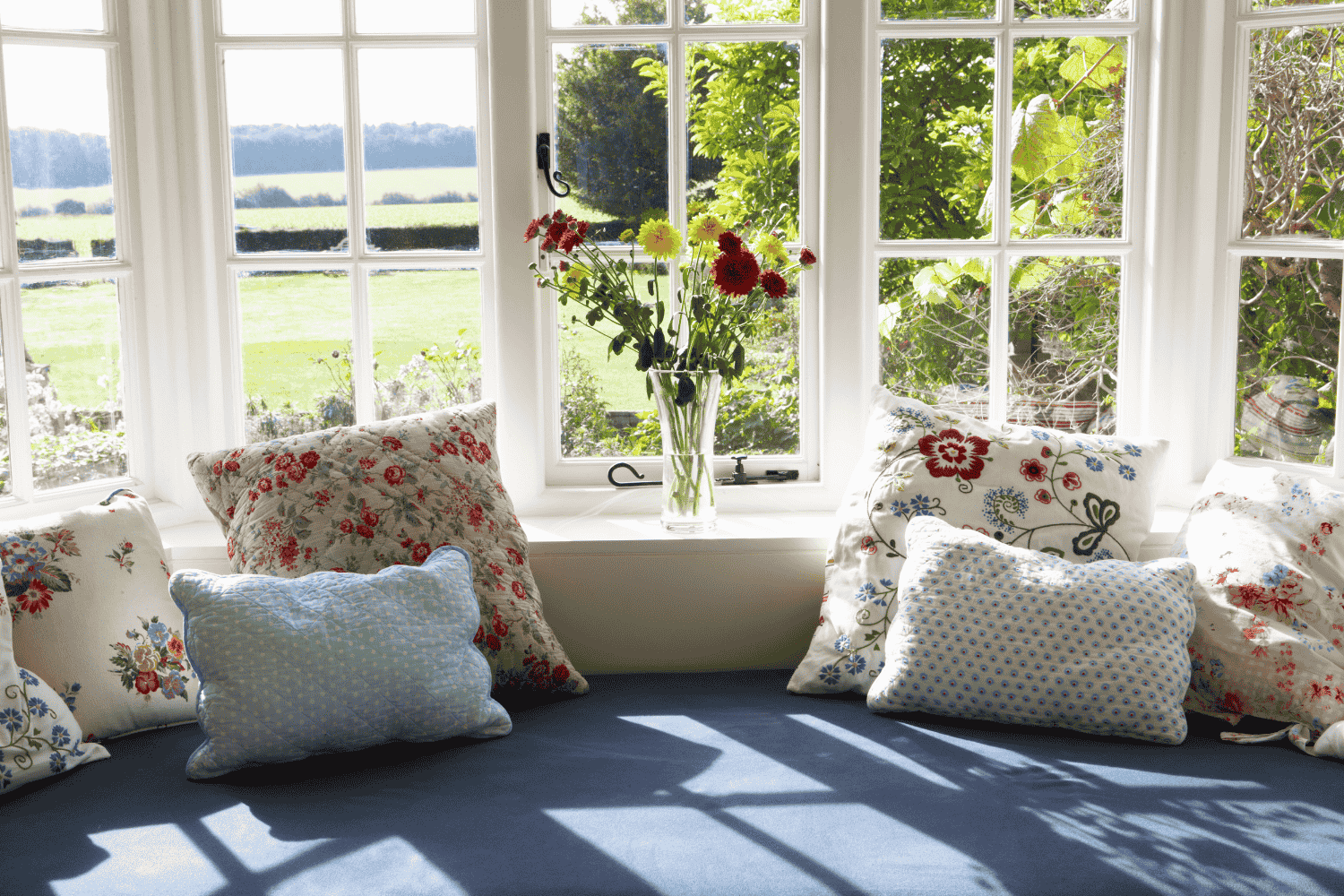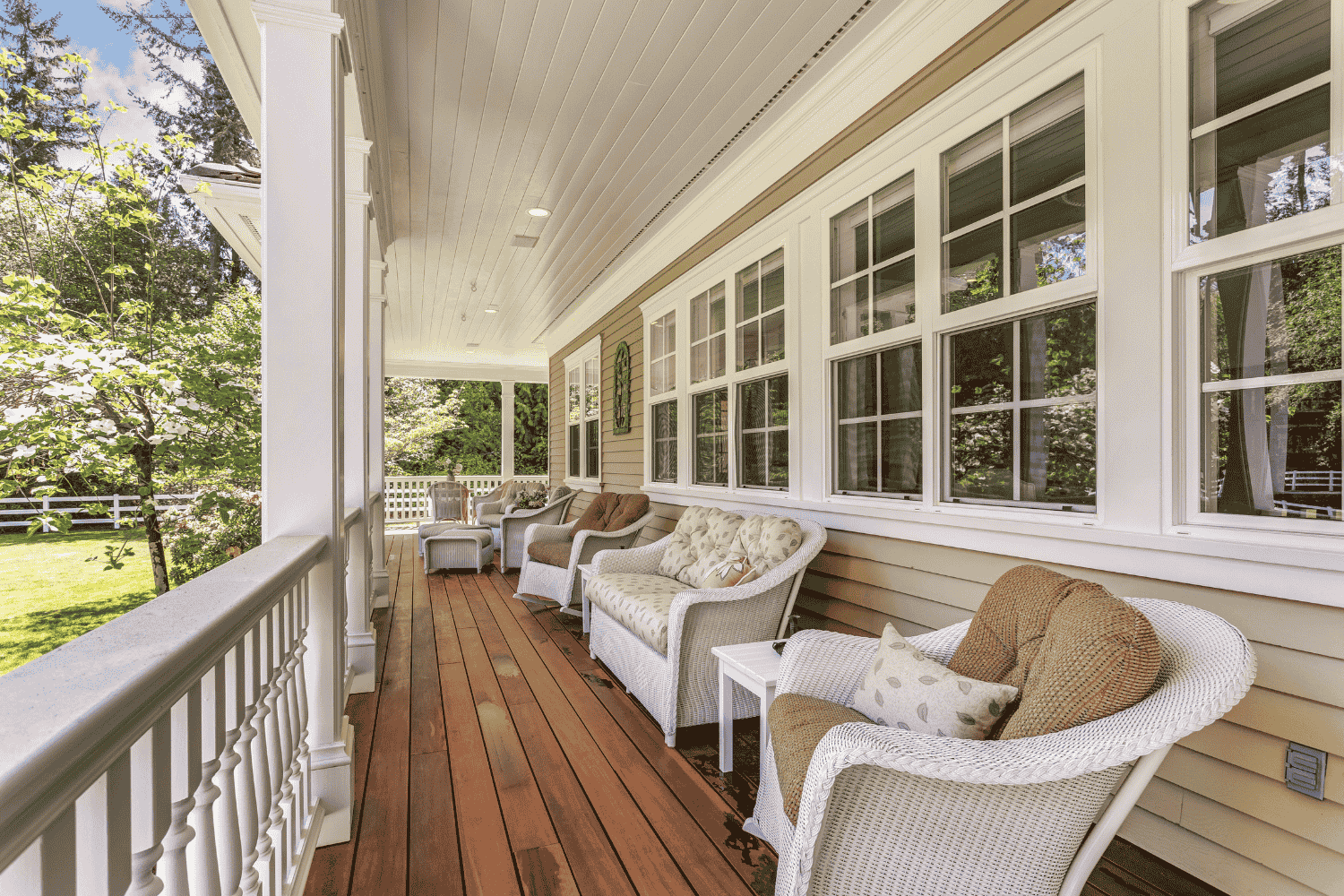Top Tips for Window Replacement for Homeowners
This guide on window replacement covers the benefits, costs, and key aspects you need to know to enhance your home’s comfort, energy efficiency, and value.
Key Takeaways
-
Window replacement significantly enhances a home’s aesthetics, comfort, and energy efficiency, potentially increasing Home value by 10% or more.
-
Identifying signs of window failure, such as drafts or condensation, is crucial for timely replacements to maintain comfort and security.
-
Choosing the right materials and professional installation is essential for maximizing performance, energy efficiency, and ensuring compliance with building codes.
Understanding Window Replacement

Window replacement isn’t just about swapping out old panes for new ones; it’s a comprehensive upgrade that can significantly improve your home’s aesthetics and functionality. New windows make homes quieter and more comfortable by reducing drafts. They also enhance curb appeal, which can make your Home more attractive to potential buyers and increase its market value.
The process requires choosing the right type of windows, the best materials, and a skilled installer for proper installation. Replacing windows is an investment that can yield a high return, often exceeding 73% at resale.
Before exploring the types and materials, it’s important to understand why window replacement is so crucial.
Why Replace Your Windows?
Old windows often lead to significant energy losses. Older windows often contribute to higher utility bills due to poor insulation and drafts. Did you know that windows can account for 25%–30% of energy use in heating and cooling homes? Upgrading to energy-efficient windows can make a substantial difference in your monthly energy bills.
In addition to energy efficiency, new windows can give your home a fresh and modern look. This upgrade doesn’t just make your home more comfortable; it can also increase its resale value. Estimates suggest that new windows can raise Home value by at least 10%. So, not only are you improving your living conditions, but you’re also making a wise investment.
When to Replace Windows
Identifying when to replace your windows is key to maintaining a comfortable home. Drafts and energy inefficiencies are often the first indicators that your existing windows are failing. If you notice condensation between panes or difficulty operating the windows, it’s likely time for a replacement.
Windows that are hard to open or close properly can indicate underlying issues. These problems not only affect the functionality but also the security of your home. Promptly addressing these signs maintains both comfort and security in your home.
Types of Replacement Windows

Choosing the right type of replacement windows can make a significant difference in your home’s comfort and appearance. The most common types include double hung windows and single hung windows. Leading window brands like Andersen, Marvin, and Pella offer a variety of styles to match any home design.
Knowing the different window types can help you make a more informed decision. From double-hung to casement and awning windows, each type offers unique features and benefits. Here are the specifics of these popular options.
Double-Hung Windows
Double-hung windows are a popular choice for many homeowners due to their versatility and ease of use. Unlike single hung windows, which have a fixed upper sash, both sashes on double-hung windows can be opened. This feature allows for improved ventilation and easy cleaning, as most new double-hung windows come with tilt sashes.
However, consider how well double-hung windows keep out cold air and water. While they are generally effective, some models perform better than others based on testing.
When installing a window air conditioner in double-hung windows, significant shimming may be required for stabilization.
Casement Windows
Casement windows are known for their unique ability to open outward using a hand crank. This design provides versatile installation options, making them suitable for various home styles. One of the key advantages of casement windows is their exceptional ventilation. They can be positioned to catch cross breezes effectively, which can be a significant benefit in improving indoor air quality.
Moreover, casement windows often provide an unobstructed view, making them a great choice for areas where you want to enjoy the scenery. Their tight seal when closed makes them more energy-efficient, reducing drafts and improving overall insulation.
Awning Windows
Awning windows are an excellent choice for rainy climates due to their unique design that allows for ventilation even during a downpour. These windows open outward from the bottom, creating an awning-like effect that prevents water from entering while still allowing fresh air circulation.
Similar to casement windows, awning windows use a hand crank for operation, making them easy to open and close. Their ability to remain open during inclement weather makes them a practical choice for homeowners looking to maintain airflow without compromising on protection from the elements.
Window Frame Materials
Choosing the right existing window frame material is equally important as selecting the window type. Common materials include vinyl, aluminum, fiberglass, wood, and composite options. Each material has its unique benefits and drawbacks that affect durability, energy efficiency, and maintenance.
Your choice of window frame material will play a vital role in the overall performance and aesthetics of your new windows. Here are the benefits and considerations of some popular materials.
Vinyl Windows
Vinyl windows are a popular choice for many homeowners due to their affordability and durability. Known for low maintenance, these windows are ideal for busy homeowners. Vinyl replacement windows are typically white, although some limited color options are available.
A major advantage of vinyl windows is their cost-effectiveness. They offer a great balance between performance and price, making them one of the best window materials available. For energy-efficient and affordable windows, vinyl is an excellent choice.
Wood Windows
Wood windows are prized for their classic aesthetic and customization options. Common interior materials for wood windows include pine, maple, and oak, allowing for a high degree of personalization. However, wood-frame windows require regular maintenance, such as painting or staining, to keep them in good condition.
Though wood windows are the most expensive, their timeless appeal and customization options make them popular among homeowners. They offer a unique charm that can enhance the overall look of your home.
Composite Windows
Composite windows provide a more stable underlying structure compared to solid wood windows. They are made from materials such as fiberglass, solid wood, laminated wood, and plastic with wood fibers, offering a blend of durability and low maintenance. Unlike wood windows, composite windows do not require painting or staining and can replicate the look of solid wood.
Quality and durability of composite windows can vary among manufacturers. Generally known for energy efficiency and customizable options, composite windows are a versatile and practical choice.
Energy Efficiency in Replacement Windows

One of the primary reasons homeowners opt for window replacement is the potential for improved energy efficiency. New windows can significantly reduce utility costs by better insulating your home. Rising energy costs can be a sign that your current windows are not performing efficiently and may need to be replaced.
Energy-efficient windows not only help in lowering your energy bills but also contribute to a more comfortable living environment by reducing drafts and maintaining a consistent indoor temperature.
Here are key features that contribute to energy-efficient windows.
Energy Star Certified Windows
Energy Star certified windows are designed to perform better than standard windows, contributing to lower energy consumption and reduced greenhouse gas emissions. These windows can lead to significant energy savings, depending on local climate conditions.
Besides lowering energy bills by an average of 12% per year, Energy Star certified windows also support environmental sustainability by reducing greenhouse gas emissions. This makes them an excellent choice for eco-conscious homeowners looking to improve their home’s energy efficiency.
Double Pane Windows
Double pane windows are often preferred for their superior insulation compared to single-pane options. The main benefit of double-pane windows is their ability to provide enhanced insulation, which is critical for maintaining comfortable indoor temperatures.
Investing in double-pane windows significantly reduces heat transfer and improves overall energy efficiency. This investment can also contribute to lower energy bills and a more comfortable living environment.
Low-E Glass
Low-E glass is a crucial component in energy-efficient windows, as it significantly reduces heat transfer. The low-emissivity coating on the glass helps to reflect heat, keeping your home cooler in the summer and warmer in the winter.
Reducing heat transfer with Low-E glass can lead to noticeable savings on heating and cooling costs, making it an excellent choice for energy efficiency. By investing in windows with Low-E glass, you can enjoy a more comfortable home while saving on energy bills.
Cost Considerations for Window Replacement

The cost of window replacement can vary significantly based on the style, material, and installation method chosen. While DIY may save money, professional installation ensures compliance with local building codes and reduces risk. Hiring certified installers can help avoid common pitfalls that could lead to costly repairs in the future.
Knowing the cost factors in window replacement is crucial for budgeting and planning. Here are the specific costs associated with different types of windows.
Replacement Windows Cost
Window replacement expenses can range from $300 to $2,500 per window, depending on the style and materials. Replacing all the windows in a house typically costs between $5,855 and $29,275. This average cost can vary based on various factors. Factors influencing these costs include frame material, appearance, energy efficiency, and upkeep.
Vinyl is recognized as the best window material for the price, and using retrofit installation can reduce costs by up to 20%. Upgrading to Energy Star certified windows can lead to annual savings ranging from $101 to $583.
Saving Money on Replacement Windows
There are several ways to save money on replacement windows. Replacing all windows at once can reduce per-window installation costs. Scheduling replacements during off-seasons, such as late fall or winter, can also reduce labor costs.
Comparing prices from various contractors and suppliers helps find the best deal on window replacement. By implementing these strategies, you can significantly impact your overall budget and make the window replacement process more affordable.
Federal Tax Credits and Rebates
Homeowners can take advantage of federal tax credits and rebates to offset the costs of installing energy-efficient windows. For instance, you can claim a federal tax credit of up to 30% of the installation costs for Energy Star-certified windows, capped at $600. This credit is available from January 2023 to December 31, 2032.
Additionally, local utility providers often offer rebates for energy-efficient windows. Homeowners can check for available tax credits and rebates through the Database of State Incentives for Renewables and Efficiency (DSIRE). These incentives make upgrading to energy-efficient windows more affordable, saving money upfront and long term.
Choosing a Window Installation Professional
Hiring a certified window installer is crucial to ensuring your new windows function correctly and achieve their intended energy efficiency. Certified installers are trained to adhere to warranty standards, ensuring that your investment is protected. A&M Home Services, for example, is dedicated to providing exceptional customer service and ensuring the job is done right the first time.
When choosing a professional, it’s essential to ask about their experience, references, and the installation process to assess their reliability. Here are tips for finding the right installer and questions to ask.
Finding Certified Window Installers
Choosing certified installers can help ensure that windows are installed correctly and function as intended. Major window manufacturers often recommend specific, trained installers for their products. It’s also advisable to verify an installer’s credentials through organizations like the American Window and Door Institute.
References and Better Business Bureau ratings can gauge an installer’s reliability. Detailed bids specifying brand, type, size, and installation techniques provide clarity for informed decisions.
Questions to Ask Your Installer
Before hiring, ask questions to assess the installer’s expertise and reliability. Inquire about their experience with your specific window type to ensure they are familiar and skilled in handling the installation. Inquire about their process and timeline to set clear expectations.
Questions about the warranty and what it covers are essential. Ask about their post-installation cleanup process to ensure your home remains in good condition. These questions will help you gauge the installer’s professionalism and commitment to quality work.
DIY vs. Professional Installation
Installing replacement windows yourself is possible but often not economical and can lead to complications. The potential savings from DIY installation can range from $300 to $3,000, but this approach comes with risks. If a problem occurs after a DIY installation, many manufacturers won’t accept warranty claims.
Professional window installers provide expertise in proper installation, knowledge of local codes, and cleanup services. Certified installers, having undergone specific training and assessments, ensure correct installation.
The peace of mind and quality assurance provided by professional installation often outweigh the potential cost savings of DIY.
Enhancing Curb Appeal with New Windows

New windows can enhance your home’s exterior, making it more attractive and potentially increasing its market value. Replacing outdated windows can make a home look well-maintained and more appealing to potential buyers.
Upgrading windows not only improves the visual appeal but also reflects a home’s overall condition. Here’s how custom windows and matching styles to your home’s design can enhance curb appeal.
Custom Windows
Custom windows provide unique designs tailored to fit specific architectural features, enhancing your home’s aesthetic. Tailored window designs allow homeowners to express their personal style, contributing to the unique character of their Home.
Custom windows can be designed to fit specific dimensions, shapes, and styles, ensuring a seamless integration with the home’s overall look. This level of customization makes it possible to achieve a cohesive and visually pleasing exterior.
Matching Window Styles to Home Design
Selecting window styles that align with your home’s design creates a cohesive look and enhances Home charm. Selecting appropriate window styles can accentuate a home’s design features, making it stand out in its neighborhood.
Upgrading windows to match your home’s character significantly improves its overall aesthetic. This thoughtful approach to window selection not only enhances curb appeal but also increases the home’s market value.
Summary
In summary, replacing your home’s windows is a crucial investment that can lead to significant energy savings, enhanced curb appeal, and increased Home value. From understanding when to replace your windows to selecting the best types and materials, this guide provides a comprehensive overview to help you make an informed decision.
Remember, the key to a successful window replacement project lies in choosing the right materials, ensuring energy efficiency, and hiring a certified professional for proper installation. By taking these steps, you can enjoy a more comfortable, attractive, and valuable home.
Frequently Asked Questions
What is the typical cost to replace a window?
Replacing a window typically costs around $750 on average, but prices can vary widely from $2,000 to $21,000 depending on factors such as window type and installation complexity. It’s essential to consider these variables when budgeting for a replacement.
How to reduce the cost of window replacement?
To reduce the cost of window replacement, evaluate the condition of your current windows and choose energy-efficient materials and styles that fit your budget. Additionally, gather multiple quotes and leverage available discounts or rebates for further savings.
Why should I replace my old windows?
Replacing your old windows is essential for improving energy efficiency, enhancing your home’s appearance, and boosting its resale value. Modern windows offer better insulation and a more attractive design, making the investment worthwhile.
What are the signs that I need to replace my windows?
You should consider replacing your windows if you notice drafts, have difficulty opening or closing them, or see condensation forming between the panes. These issues can indicate that your windows are no longer effective.
What types of replacement windows are available?
Replacement windows commonly include double-hung, casement, and awning styles, offering various benefits for your home. Choosing the right type can enhance both aesthetics and energy efficiency.
 574-318-3326
574-318-3326






